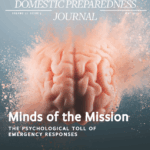An Article Out Loud from the Domestic Preparedness Journal.
School crisis response plans come in a variety of formats. Although the structure may vary, the content must include the essentials for the plan to be usable and effective. A basic school-based crisis response plan has seven key elements: organizing structure, communications system, accountability system, parent/student reunification, alternative location, equipment and supplies, and aftermath/recovery plan.
Sponsored by Juvare, the makers of WebEOC. Learn more at www.juvare.com
Narrated by MacGregor Stephenson

Mary Schoenfeldt
Mary Schoenfeldt, Ph.D., is an experienced emergency management professional who understands disaster trauma both professionally and personally. She was duty officer for a large partner city the morning of one of the most catastrophic disasters in Washington State, and she was assigned the role of developing and coordinating disaster stress management services for the emergency operations center (EOC) staff. She has helped develop programs and has responded within EOCs to provide services. She is currently working with several states around the United States as they develop emergency management peer support programs. She is the board president of Green Cross Academy of Traumatology and has responded to countless disasters. She specializes in community and school crises and has a passion for disaster psychology. She is a faculty member of FEMA Emergency Management Institute, an adjunct faculty at Pierce College, and a subject matter expert for the U.S. Department of Education. She also serves clients through her consulting business. She can be reached at yoursafeplace@msn.com.
- Mary Schoenfeldthttps://domprep.com/author/mary-schoenfeldt
- Mary Schoenfeldthttps://domprep.com/author/mary-schoenfeldt
- Mary Schoenfeldthttps://domprep.com/author/mary-schoenfeldt
- Mary Schoenfeldthttps://domprep.com/author/mary-schoenfeldt








